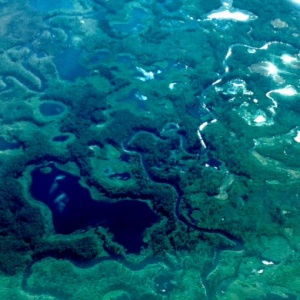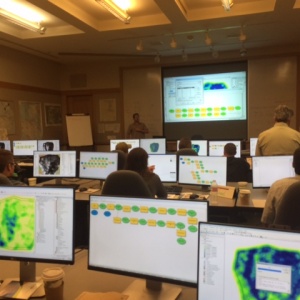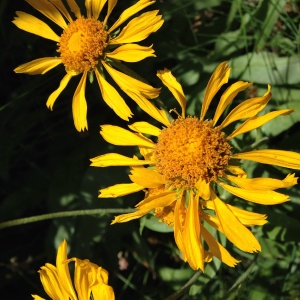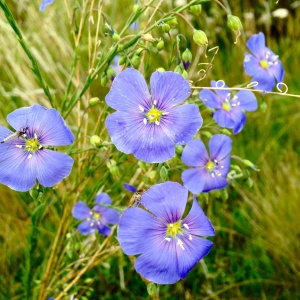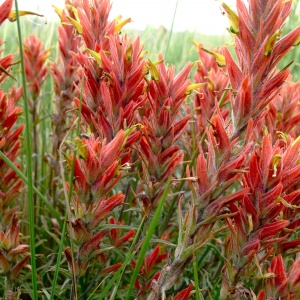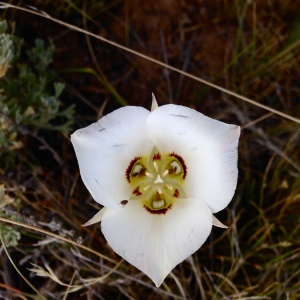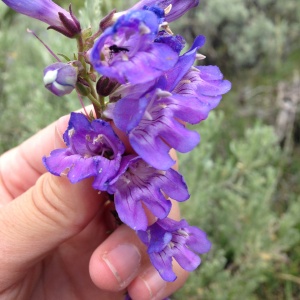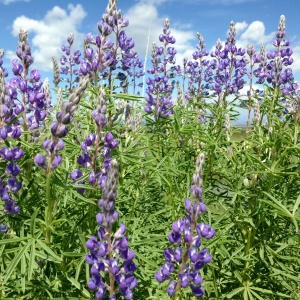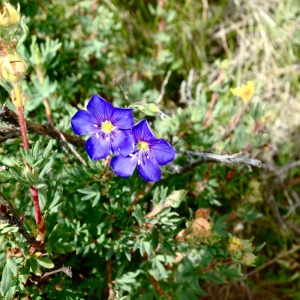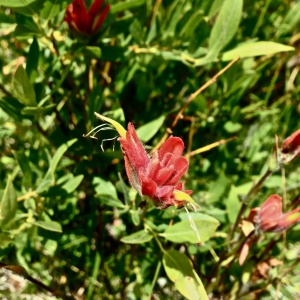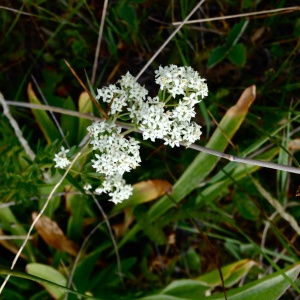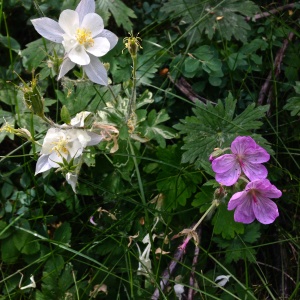
Lost Coast Headlands, Arcata BLM Lands.
These are the days of summer on the North Coast. Often unpredictable – bookended by fog in morning and evening some days; on others morning fog gives way to wind strewn and pellucid evenings. Thirty miles or so to the East temperatures are high and the summer receives its thought-of heat, that awakens elevated flowers and splits to seed the lowland inhabitants. Summer is shifty: drifting between comfortable sensuous inaction and a leap in the metabolic movement of a life.
Here at the inner bark of summer – halfway through July – a turning reflection: I am more than halfway through my CLM internship!
My last day will be September 23rd, a date readily approaching at the speed of life we know to be expectedly incongruous. The next adventure is decided, a return to Patagonia to work on a ranch I visited on my last foray to the South – Estancia Ranqilco. More on this in my final reflective post – today, a hopefully halfway reflective check-in from the land of Redwood, salt-breeze and changing fog!

Mimulus [Erythranthe] cardinalis — Cardinal Monkeyflower — A flower I have enjoyed endlessly in the Sierra Nevada, but had no idea it occurred in the Klamath Foothills!
I have been working mainly on collecting for Seeds of Success since my last blog post, enjoying greatly the cycles of phenology monitoring, seed collection, and packaging, data completion, the final sending off to the Bend Seed Extractory.
Being the one and only CLM intern at my field office, the joy of well-chosen companions in the field is not lost on me, and I have had a plenitude of this special joy over the past several weeks. Wildlife technicians, forest ecologists, and even the assistant field manager of the Arcata BLM Field Office have joined me on my seed collection missions! We build powerful connections not only to the people we work with but also to the work of others when we can take the time to commit to some inter-discipline-inner-office-cross-training. We are afforded respect, understanding and wholesome interrelation with those we share an organization with day in and day out. We are also gifted someone to help us with our multitude of tasks, and reciprocally are confirmed in our ability to be of use outside our particular expertise, happy to provide the gift of a little of our energy to another. This seems a crucial and fulfilling step, too often we are trapped myopically in our disciplines and resource areas. Trade a day with someone doing something very different from you in your office – it won’t be wasted time in any sort of way.

Arcata BLM Field Office assistant field manager Chris Heppe amongst a sea of Ceanothus cuneatus seed!

Ceanothus silk moth — out on its great journey.
At another intersection, seed collection connects us to the more-than-human world in a way that is practical, physical, and ancestral. We have all been seed collectors. Regardless of race, gender, or personal beliefs, when we gather we enter into a nutritive relationship based on mutual respect for the creatures from which we gather. Rather than extoll the personal, ecological, institutional and spiritual benefits of seed collection – I will encourage CLM interns to collect with intention, career-minded adults to advocate for seed collecting/banking/saving and all to pursue opportunities to collect seed! In the beautiful words of Hope Jahren (author of the lucid book Lab Girl): “A seed is alive while it waits. Every acorn on the ground is just as alive as the three-hundred-year old oak tree that towers over it.” May we be fully alive while we collect and may the simple act of collection make us more alive.
Along this same rivulet is another experience I have gratefully accepted through the past weeks as a CLM intern. BLM recently donated a large old growth log that had been sitting in a parking lot to the Wiyot Tribe. An elder from the Yurok tribe agreed to help in the re-learning of the traditional skills of plank-making and dug-out canoe carving. I had the great opportunity to help swing the hammer with both my hands and drive the wedges that split this great 600 year-old log. An experience readily compared to a deep, cool well-spring where water is inimitably needed.


In the coming weeks – I will be working on Seeds of Success, monitoring grazing allotments, writing drafts of the Headwaters Forest Reserve Resource Management Plan Amendment, feverishly working on mounting and cataloging my herbarium specimens, preparing a butterfly field guide for the Arcata BLM office, and working alongside US Fish and Wildlife on a project monitoring coastal dune geomorphology and vegetation in response to a changing climate.
When I am not on the clock as a CLM Intern these days, I have been venturing away from Arcata most weekends, enjoying all the richness of Northern California.

Red Mountain Meadows, Trinity Alps. A botanist’s paradise!
Notably, the Trinity Alps have taken me in as a sojourner; their granite as much thrust to the West from the mother pluton of the Sierra Nevada as I have been. If one thing can be said certainly about the Trinity Alps, it is that it is a range with illustrious botanical wealth. Spring has arrived in the subalpine – and I had the special privilege to hike one of the steepest trails in the Trinity Alps with my Jepson Manual for an overnight botanical backpacking bonanza. Keep up with a few of the wonders here (or better yet take a walk!): Kaleb’s iNaturalist observations!
In this way, the unique landscapes in which we are placed give their ripe and ready interplay with our work as CLM interns. We do not simply halt our training and inclinations as naturalists, ecologists, conservationists, curious humans when we leave the field office. On the contrary, these skills shine bright after-hours in myriad ways, my anecdote above being just one of them. Because of this, we lead a holistic and wholesome existence in which the false dichotomy between work and play is enthusiastically and passionately eclipsed.

My camp above Echo Lake and Middle Peak.
To summarize these past months and intensify my intentions for the rest of my CLM internship:
I have been beside the water, in large part, as we tend to be with summer coming complete, from the Pacific Ocean and Humboldt Bay to the Mad River, Van Duzen River, Trinity River, Stoney Creek, Echo Lake…
Why? For practice and the pertinence of permeability. To practice patient, longing listening — the melody of the greatest symphony; river, stone, air and sun. I come to practice the olfactory and audible — sweet subtle summer Redwood and Fir. To test remembrance: March storms, birdsong, flowers now gone to seed.
I come to practice my passive permeability. Our simple debt to water makes us naturally osmotic beings — shifting gradients — essentially terrestrial sponges. And so we come alongside the river, the mountains, the sea. Our openness defines what we are — and we must practice and guard our permeability.

Yours,
Kaleb Goff
Arcata BLM Field Office, California


